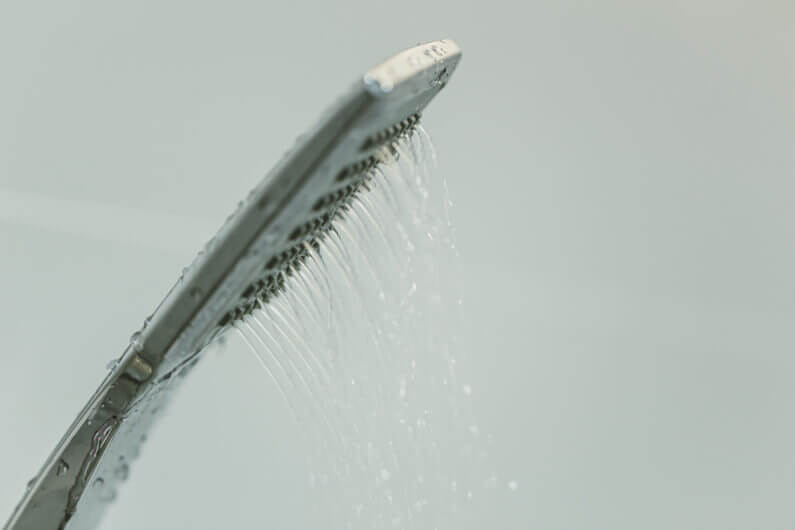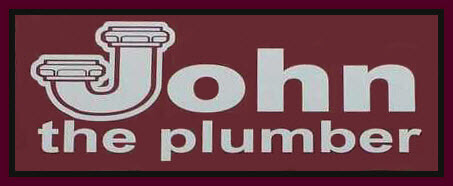John the Plumber's Blog
Plumbing Articles from Kansas City, MO & KS
5 Causes of Low Water Pressure in Your Home

According to Home Reference, low water pressure does more than make it take forever to wash your hands. It can also lead to longer washing machine times and cause your toilets to function ineffectively.
Low water pressure is a fairly common household problem that you’ll probably encounter at some point in your life. Read on to learn a little about how you can detect what’s causing your low water pressure and what you can do about it.
What Causes Low Water Pressure in Your House?
There are many possible causes of low water pressure in a home, even more than we can discuss here. Sometimes, the problem has nothing to do with your own house’s plumbing system. Instead, the city or the water supplier might be having problems or changing how they run things.
The most important thing is to know which reasons for low water pressure can be fixed by you personally, and which ones require a skilled professional to come to your house.
1. Clogged Pipes
Low water pressure in the house is often the result of clogged pipes. Pipes cover amazing distances and have to be able to smoothly transport water through every foot of that distance. A clog in any spot of the entire system can block your water transport completely.
Small clogs can result in pipes that still deliver water, but unreliably or at lower pressures. Even a small clog can have an unfortunately large effect on the volume of water your pipes can deliver through your home’s various fixtures.
Because a clog can occur anywhere in the pipe, they usually require the attention of a trained plumber. A homeowner can hardly be expected to go through their home’s entire system of pipes hoping to find the clog by luck.
2. Damaged Pipes
Depending on your pipe’s materials, it can last for as long as 70 years or for as little as 20. Galvanized steel pipes, in particular, are known to break down in closer to 20 years’ time.
When buying a house, it’s important to remember to ask about the piping materials and when they were last replaced. An older home that seems like an absolute dream could be 19 years into some galvanized steel piping and be ripe for low water pressure soon after you move in.
Modern houses tend to shy away from the use of galvanized steel pipes, so it’s especially with older homes that you need to be on the lookout for these short-lived pipes.
Another way that homeowners often end up suffering from corroded pipes is when they have new home fixtures added to their house and the contractor cuts some corners. A thorough installation job of new pipes should include adding larger branch lines to the piping.
Adding new fixtures means putting greater stress on the branch lines, so without these enlargements, your pipes will be working under excessive stress after a new fixture installation.
3. A Partially Closed Main House Shutoff Valve
Your home comes with a main house shutoff valve which controls how much water can flow between your house and the water supplier or city. Unless you’ve had special cause to, there’s a good chance you’ve never heard of this valve or had any reason to use it. Depending on the past history of the house, it’s possible that, at some point, someone turned the handle of the main house shutoff valve so that it wasn’t completely open.
The result can be chronic low water pressure. This might be the cause if your house has always had low water pressure, or if it started to have low water pressure after someone may have touched the main house shutoff valve.
It’s less likely to be the culprit if your home suddenly experiences a drop in water pressure and no one has had any opportunity to be around the main house shutoff valve.
4. A Malfunctioning Pressure Regulator
Some homes come equipped with a pressure regulator. The pressure regulator measures how much water is allowed into your house and adjusts the free flow of water into the home accordingly. If it’s malfunctioning, then it may read that there is more water pressure than there really is, leading it to decrease how much water is allowed into your house.
One way to know if your pressure regulator is malfunctioning is to use a water pressure gauge on a hose spigot outside. The water pressure gauge reading should match the pressure regulator reading, or else one of them is malfunctioning.
While it’s always possible that the fault lies with the water pressure gauge, it’s more likely a sign that something is wrong with your pressure regulator.
5. Faulty Home Fixtures
If you have loss of water pressure in the house, then your problem is probably any of the system-wide failures mentioned above, or a problem with the water supplier or the city. There’s almost zero chance that every fixture in your home is malfunctioning at the same time in the same way.
On the other hand, if only a few of your home’s fixtures seem to have a problem, then the problem is probably the fixture itself. For example, if one of your toilets works fine, and the other one takes forever to refill, then the problem may be with the toilet rather than with your water system.
One common way that faucets start to malfunction has to do with their aerators. The aerator is positioned at the tip fo the faucet and works to slow down how much water comes out of the faucet. They are easily clogged with dirt and can also rust shut over time.
You can easily remove your aerators to give them a quick look. If you detect rust or dirt blockage, then your return to proper water pressure can be as simple as installing new aerators.
Keep Your Home Free From Low Water Pressure
We hope you learned something helpful from this brief piece about the most common causes of low water pressure. To learn more about how to keep your plumbing and water systems working perfectly, you can reach us here.
1 Comment
Submit a Comment
Request Free Quote
Serving Kansas City, Overland Park, Independence, Shawnee, & Surrounding Area's
FREE ESTIMATES
john the plumber
Full Service Plumbing Kansas City, MO-KS
John the Plumber LLC
5963 Paseo Blvd.
Kansas City, MO 64110
(816) 708-2020
or Send Us an Email Here.
© 2017-2024 JohnthePlumberKansasCity.com
– All rights reserved. –
Information on this website may not be re-used without prior written consent from John the Plumber LLC.
HOURS & LICENSE INFO
Monday-Saturday: 8:00am to 8:00pm
Sunday: Closed Normal Appointments
Emergency Client Service Available
Kansas & Missouri Licensed, Bonded, Insured
Master Plumbing Contractor 204249





This information is helpful. I still have a question how do I clean a shower wand that seems to be causing the low water pressure? Is there a way fix this without out replacing the wand itself?